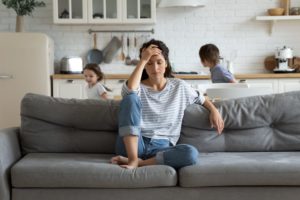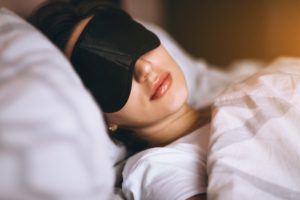How to Sleep with Lower Back Pain: Finding Comfort and Relief
- Sleeping position is crucial to spinal alignment and poor sleep posture can increase pressure on the lumbar spine.
- Choosing the right mattress and pillow can significantly improve comfort and support.
- If pain is persistent or worsening, visit a healthcare provider for further evaluation.
The lower back is an interwoven series of structures. It includes the five vertebrae of the lumbar spine, each of which is bolstered by shock-absorbing discs and held in place by ligaments, surrounded by supportive muscles.
The lower back supports most of the body’s weight and is integral to all kinds of movements. Given the complexity of the lower back and how much we depend on it, it comes as no surprise that it is a leading hotspot for pain. Eight out of 10 people have back pain at some point during their life, and lower back pain is one of the top reasons why people see a doctor.
Understanding the links between sleep and lower back pain offers new approaches to finding relief. Quality sleep can help prevent or reduce back pain, and knowing how to sleep when you have back problems can help cope with pain and contribute to healing and recovery.
Types of Lower Back Pain
Back pain can range from mild to severe, and it may be short-lived or long-lasting. When serious, it can be debilitating and interfere with nearly all aspects of daily life, including sleep.
There are two primary types of lower back pain: acute and chronic.
- Acute lower back pain is short-term, lasting for just a few days up to a few weeks. It is often connected to an identifiable event or injury. When acute back pain fades, there is no ongoing effect on mobility.
- Chronic lower back pain goes on for three months or longer. In many cases, it occurs without a clear link to an initial injury.
Lower back pain that starts as acute may become chronic. It is estimated that around 20% of cases of acute low back pain persist and become chronic.
How Are Sleep and Lower Back Pain Related?
Researchers have long seen an association between lower back pain and sleeping problems, and growing evidence points a two-way relationship in which they can be mutually reinforcing.
Discomfort from pain can be a major barrier to sleep. Lower back pain makes it hard to get comfortable enough to fall asleep or may provoke nighttime awakenings when pain surges.
At the same time, people with sleep problems are more likely to start having pain or to have pain get worse . Experts aren’t certain why this happens, but there are several potential explanations. Sleep deprivation may impair healing, affect mood in a way that heightens pain sensitivity, or disrupt chemicals in the brain that are involved in how we experience pain.
How Do Sleeping Positions Affect Lower Back Pain?
Another link between sleep and lower back pain is tied to how sleeping position affects spinal alignment. Although posture is typically associated with sitting and standing, it’s also critical when lying down.
A sleeping position that involves twisting, contorting, or otherwise putting pressure on the lumbar spine can cause pain and stiffness. This pain is often worse in the morning but may persist throughout the day.
The Best Sleeping Positions for Lower Back Pain
The best sleeping position for lower back pain is on your side with a partial bend in the knees . Keeping the knees bent helps balance the body and reduces pressure on the lumbar spine. Many people find it helpful to put a small pillow between their knees to make this position more comfortable.
Unfortunately, many back and stomach sleepers have a hard time changing their sleeping position. Even so, they can take steps to reduce strain on their lower back:
- Back sleepers can put a pillow under their knees, legs, and/or lower back to support the natural curve of the spine and minimize lumbar pressure.
- Stomach sleepers should opt for only a thin pillow under their head and place a more supportive pillow under their hips and abdomen. This works to prevent the lower back from sinking into a U-shape that pulls the spine out of alignment.
Some people with back pain use an adjustable bed that makes it easy to raise the upper or lower part of the mattress in a way that decreases tension in the lower back.
Can Your Mattress Cause Lower Back Pain?
Because it is a principal means of supporting the body during sleep, a mattress can play an important role in preventing or reducing lower back pain.
Proper spinal alignment demands a mattress that is in good condition and doesn’t sag excessively. Research supports using a medium-firm mattress to combat lower back pain , although the most appropriate firmness can vary based on a person’s weight, body shape, sleeping position, and individual comfort preferences.
How to Sleep Better With Lower Back Pain

Getting quality sleep is an important part of recovering from lower back pain, but sleeping well may seem like a tall task when your back hurts. While there’s no guaranteed way to get better sleep, certain practical tips can help:
- Find a supportive sleeping position: Ideally, you can sleep on your side, but regardless of the position, make sure your spine is well-aligned. If needed, use extra pillows for body support.
- Be careful with alcohol and caffeine: Though alcohol may help you doze off, it can throw off the quality of your sleep. As a stimulant, caffeine can make it harder to fall asleep and stay asleep.
- Try relaxation methods: Finding techniques to wind down can put you in the right state of mind for sleep with less focus on pain.
- Reduce potential sleep disruptions: If you inadvertently wake up at night, pain may make it harder to get back to sleep. For that reason, try to eliminate excess noise and light from your bedroom or block them out with a sleep mask or earplugs. Set your bedroom to a temperature that will be comfortable throughout the night.
Focusing on sleep hygiene can improve your sleep habits so that you can sleep better both during and after episodes of lower back pain.
When Should You See a Doctor About Lower Back Pain
Back pain is common and often recedes quickly, but it’s important to talk with a doctor if:
- The pain began with a specific injury
- Pain continues or worsens for more than a few days
- Pain is debilitating
- Pain radiates to the legs or other parts of the body
- You experience weakness or numbness in your lower body
- There are signs of infection like redness, warmth, swelling, or fever
- You have a personal history of cancer
- You have other unexplained health changes like weight loss or urinary problems
A doctor can review your symptoms and determine the appropriate next steps for testing, diagnosis, and treatment.
References
7 Sources
-
MedlinePlus: National Library of Medicine (US). (2016, October 21). Back Pain.
https://medlineplus.gov/backpain.html -
A.D.A.M. Medical Encyclopedia. (2019 May 13). Low back pain – chronic.
https://medlineplus.gov/ency/article/007422.htm -
Marty, M., Rozenberg, S., Duplan, B., Thomas, P., Duquesnoy, B., Allaert, F., & Section Rachis de la Société Française de Rhumatologie (2008). Quality of sleep in patients with chronic low back pain: a case-control study. European spine journal : official publication of the European Spine Society, the European Spinal Deformity Society, and the European Section of the Cervical Spine Research Society, 17(6), 839–844.
https://pubmed.ncbi.nlm.nih.gov/18389288/ -
Finan, P. H., Goodin, B. R., & Smith, M. T. (2013). The association of sleep and pain: an update and a path forward. The journal of pain : official journal of the American Pain Society, 14(12), 1539–1552.
https://pubmed.ncbi.nlm.nih.gov/24290442/ -
American Academy of Family Physicians. (2020, January 17). Low Back Pain.
https://familydoctor.org/condition/low-back-pain/ -
Jacobson, B. H., Boolani, A., Dunklee, G., Shepardson, A., & Acharya, H. (2010). Effect of prescribed sleep surfaces on back pain and sleep quality in patients diagnosed with low back and shoulder pain. Applied Ergonomics, 42(1), 91–97.
https://pubmed.ncbi.nlm.nih.gov/20579971/ -
Ancuelle, V., Zamudio, R., Mendiola, A., Guillen, D., Ortiz, P. J., Tello, T., & Vizcarra, D. (2015). Effects of an adapted mattress in musculoskeletal pain and sleep quality in institutionalized elders. Sleep science (Sao Paulo, Brazil), 8(3), 115–120.
https://pubmed.ncbi.nlm.nih.gov/26779317/










